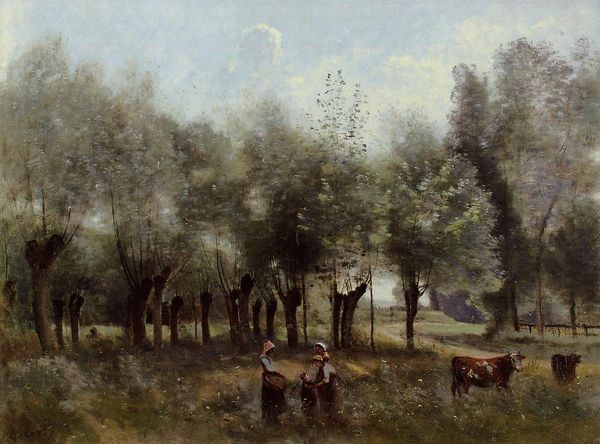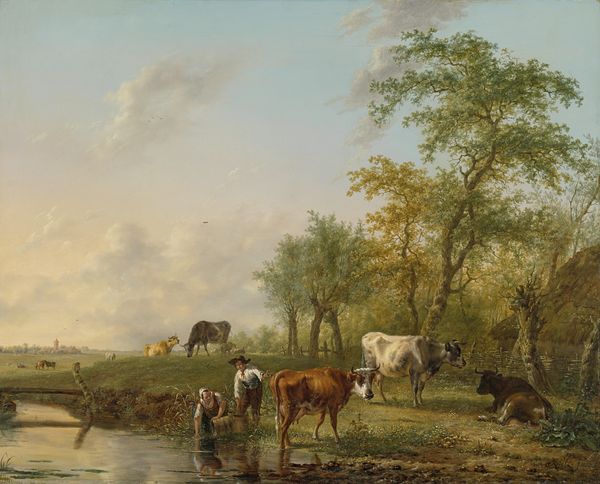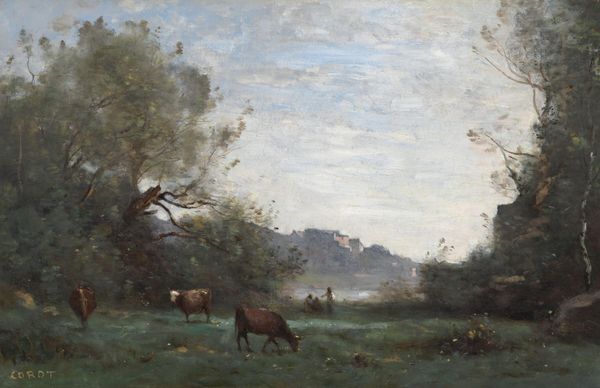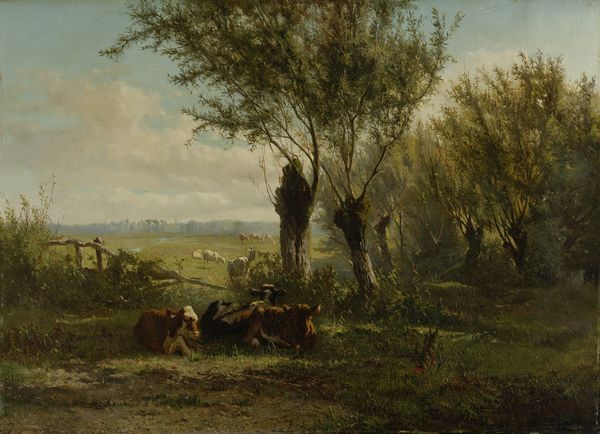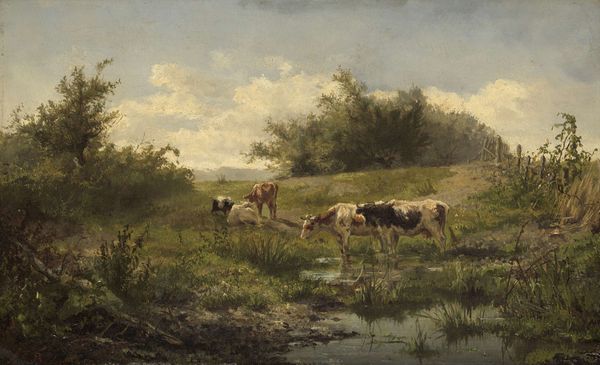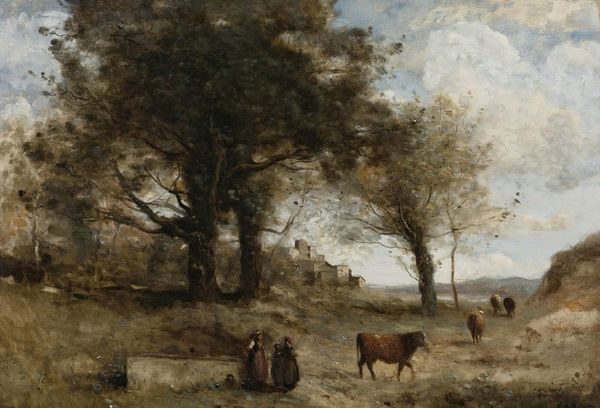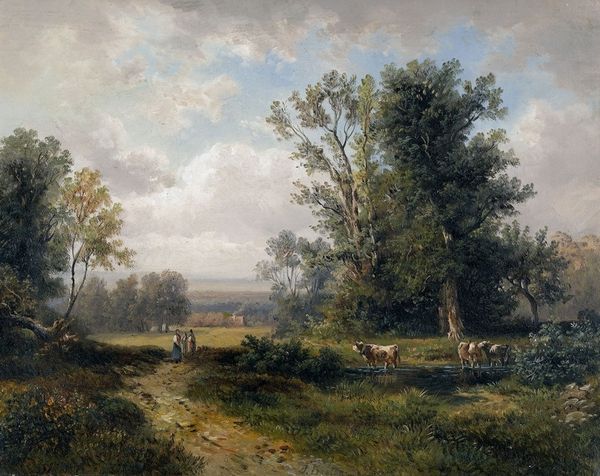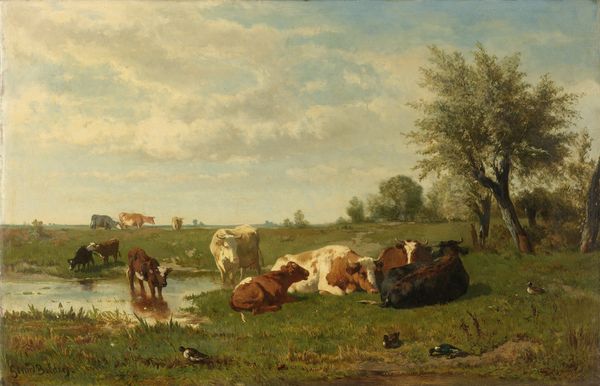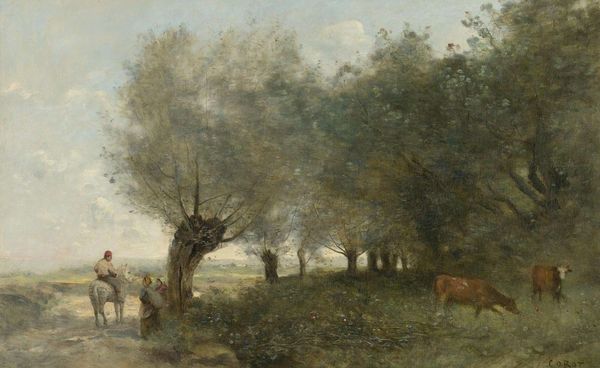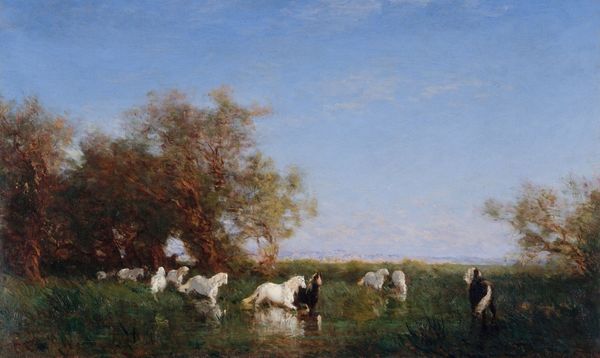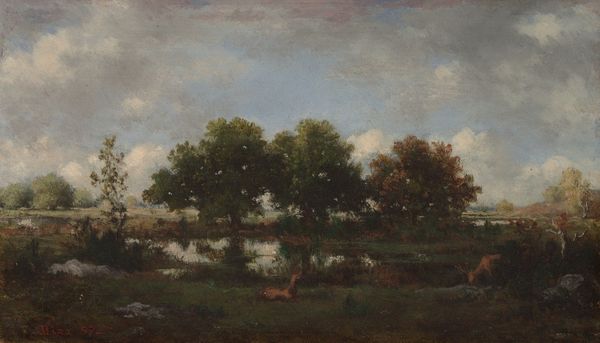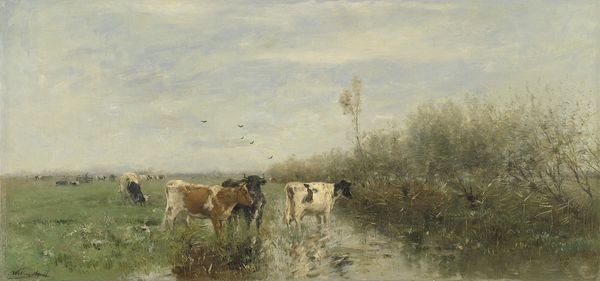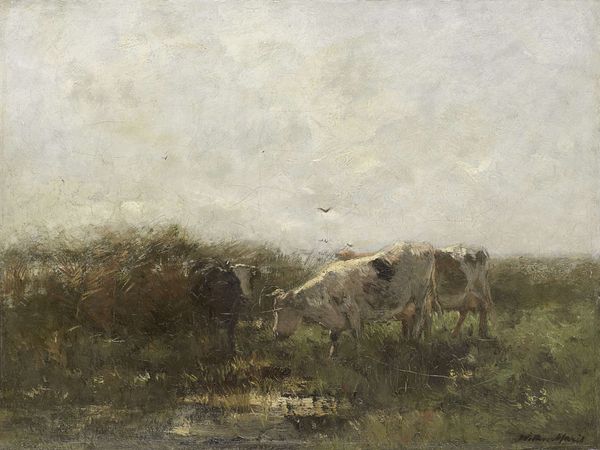
painting, plein-air, oil-paint
#
dutch-golden-age
#
painting
#
plein-air
#
oil-paint
#
landscape
#
charcoal drawing
#
nature
#
genre-painting
#
realism
Dimensions: height 27 cm, width 35 cm, depth 7.8 cm
Copyright: Rijks Museum: Open Domain
Editor: We're looking at Gerard Bilders' "Cows at a Pond," painted around 1860-1865. It’s an oil on canvas painting, and I’m immediately struck by how soft the light is. It creates this serene, almost hazy atmosphere. What details stand out to you? Curator: The atmospheric perspective is undeniably masterful. Note how Bilders uses tonal variations, primarily subtle gradations of gray and green, to suggest depth. Observe, also, how the structure within this landscape integrates the horizontal plane with rhythmic, near-vertical assertions within the trees, directing your eyes from cows, to children, to treeline. What do you make of the materiality? Editor: The materiality feels very important to how the light is diffused, doesn't it? The brushstrokes seem deliberately loose and blended, avoiding sharp definition. Is that a common element within landscape paintings of this era? Curator: Precisely. One might see this lack of precision as key to its affect, the materiality in support of the natural and observed rather than traditionally staged artifice. And the materiality of paint—its very viscous plasticity—was the central concern of the contemporaneous Realist project. Note also how it allows for a unified and consistent light and palette in all registers of this painting, which ties together sky and reflection in the pond and thereby promotes compositional unity. Does the subtle composition indicate a clear focus? Editor: I'd say the cows are the focus because they're in the foreground and have more detail, but their quiet, unassuming demeanor shifts focus away from classical, staged artistic focus and emphasis. So, is it possible the 'lack of focus' is really the point, since it draws attention to its realistic style and intent? Curator: An interesting point. Bilders moves away from academic painting through an embrace of, on the one hand, observed natural form as primary subject and, on the other hand, through a strategic development of Realist materiality as equal compositional claim. The point being, there is no hierarchy: all elements carry the same compositional and ontological weight. Editor: That’s a fascinating perspective, viewing the composition as egalitarian rather than hierarchical. I hadn’t considered that. Thank you! Curator: My pleasure.
Comments
No comments
Be the first to comment and join the conversation on the ultimate creative platform.
